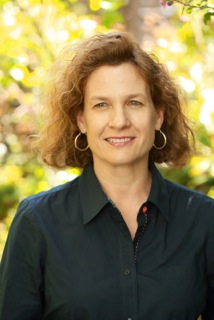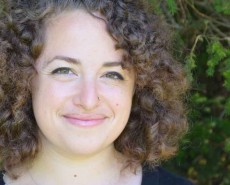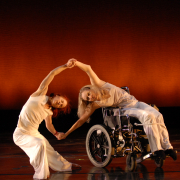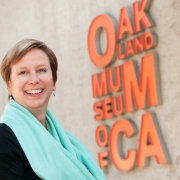A Glance at Grantmaking with Helicon’s Marcy Hinand
 Marcelle Hinand is a management consultant with over 25 years of experience working with nonprofit cultural organizations and foundations on strategy, program development and assessment. Prior to joining Helicon, Marcy was program director for the arts at the James Irvine Foundation. There she commissioned groundbreaking research on cultural engagement and initiated innovative programs to boost cultural participation. Prior to that, Marcy worked with the TCC Group, where she developed and managed the Knight Foundation’s Community Partners in the Arts Access Program, among other large-scale projects. Marcy managed the Ford Foundation’s $40 million New Directions/New Donors for the Arts program, and held positions at the Nonprofit Finance Fund, the Lila Wallace-Reader’s Digest Fund and the National Endowment for the Arts. She holds a B.A. from Skidmore College and an M.F.A. from Brown University. Her current projects include consulting on fundraising strategy and advancement for the Community Arts Stabilization Trust (CAST), working with Yerba Buena Center for the arts on their strategic framework, and managing capacity building assessment and cohort activities for the Kenneth Rainin Foundation Impact Grant Program. To learn more about Marcy or to learn about Helicon Collaborative visit them at heliconcollab.net
Marcelle Hinand is a management consultant with over 25 years of experience working with nonprofit cultural organizations and foundations on strategy, program development and assessment. Prior to joining Helicon, Marcy was program director for the arts at the James Irvine Foundation. There she commissioned groundbreaking research on cultural engagement and initiated innovative programs to boost cultural participation. Prior to that, Marcy worked with the TCC Group, where she developed and managed the Knight Foundation’s Community Partners in the Arts Access Program, among other large-scale projects. Marcy managed the Ford Foundation’s $40 million New Directions/New Donors for the Arts program, and held positions at the Nonprofit Finance Fund, the Lila Wallace-Reader’s Digest Fund and the National Endowment for the Arts. She holds a B.A. from Skidmore College and an M.F.A. from Brown University. Her current projects include consulting on fundraising strategy and advancement for the Community Arts Stabilization Trust (CAST), working with Yerba Buena Center for the arts on their strategic framework, and managing capacity building assessment and cohort activities for the Kenneth Rainin Foundation Impact Grant Program. To learn more about Marcy or to learn about Helicon Collaborative visit them at heliconcollab.net
Marcy was interviewed by Leah Reisman, who is currently pursuing a PhD in sociology at Princeton and was a 2013-14 EAP Fellow.
LR: What pieces of advice would you want to give to someone who might want to follow a career path similar to yours?
MH: I did not intend to follow a career path to be a grant-maker, and I actually think that going into philanthropy and arts grantmaking is a very difficult path because there are very few spots in the grantmaking world. So I think aspiring to that is being aware of the fact that it’s a relatively small sandbox and being open to the different permutations of being an arts grant-maker, which can include working for a funder, being an intermediary, being a consultant or having other relationships with philanthropy and foundations.
The one piece of advice that I always give young people who say that they want to go into philanthropy is to think about the public sector—that is the way that I started.
In my day, there was a fellowship at the National Endowment for the Arts called the Arts Administration Fellows, and most of the people who are my peers who are in leadership positions in the arts across the country were Arts Administration Fellows. That’s a real testament to the NEA and their foresight that if they trained people like that, they would be leaders in the field. So I definitely think even though there isn’t a federal fellowship in the arts anymore that learning about grantmaking at the government level, whether it’s the San Francisco Art Commission, the California Arts Council, or even local public agencies, can give one at an entry-level, very solid grant-making experience that’s hugely attractive to private philanthropy.
LR: Right. And so a similar question—why do you think that you ended up where you are? You could speak to that professionally, personally, or somewhere in between.
MH: I went to graduate school and got an MFA in poetry, and the primary option when you graduate is to be an academic—it is very, very difficult to make a living as a poet. I knew that wasn’t the path for me. I had worked in several literary organizations and a community arts center in Cambridge, Massachusetts before graduate school, and I really liked that work. I took the grant-making path only because a fellowship opportunity opened up in front of me, and I thought if I learned about grantmaking I could find my way back into non-profit arts organizations. But the whole view that you get, the sort of macro perspective of grant-making, was extremely interesting to me, and so I never went back [to non-profit work].
I was opportunistic and I think people need to be opportunistic if they want to make a career in non-profits in general, and in the arts in particular. I have paid attention over the years to this whole concept of the transfer of wealth and the way in which the foundation sector is changing, and I’ve really thought about where I’m going to go next based on some of those economic and philanthropic trends, which I believe one has to be aware of.
Coming to San Francisco was partially a family decision, but it was also very calculated on my part. I saw there was a lot of wealth being developed in Silicon Valley and paid attention to the predictions that there was going to be a philanthropic wave for some time here, which I think we are seeing.
LR: Really interesting! Okay, I’m going to change the subject a little bit. How does work-life balance work for you?
MH: I have a great work-life balance because I work for myself. I own the company with my business partner, Holly Sidford, so I decide how much I work. I am very, very privileged to be in that position, but I’ve also have been doing this for thirty years, so that’s why I’m in this position. And I also have two children and am a single mom, so I need to have work-life balance. I have not found that to be the case when I worked inside institutions. I was the director of the arts program at the Irvine Foundation, and that was a less family-friendly position at the time that I was there. Although, again, I hope that women who are younger than me are paving that path because I think we are horribly behind the corporate sector in that way. Telecommuting, flex hours, different ways to design one’s work and the balance of the situation is the wave of the future, if not the present. In the more progressive industries, it is the norm. It is kind of ironic that we in the non-profit sector are undercompensated, under-recognized and can’t get work-life balance together.
LR: When do you get to be creative? And what is the definition of creativity you use?
MH: Well, I have two answers to that. My work is very creative because I design the way I run projects [and conduct] inquiry or interaction with organizations, and I plan with them and partner with them in what we want to accomplish and how to get there. That’s a lot of creativity, in my view. And, you know, being creative for me at this point in my life is primarily participating in creativity of others. I’m going to museums or performances or consuming culture in whatever ways I can. Literature is my field, so I read a lot of contemporary literature.
But my second answer is that I made a very critical decision in my life when I was at Brown, in graduate school, that I was not going to live the life of a creative person. That I was going to work in the sector, and facilitate the creativity of other artists, not that I was not going to try to live the life of an artist and an arts administrator at the same time. And I feel like it’s one of the most important decisions I’ve made in my life.
Many of my friends who I went to graduate school with or who are artists are constantly in conflict, warring between their work life and their creative life, and I made that decision for myself at some point and never looked back.
LR: And the last question—who or what inspires you?
MH: First and foremost, I’m inspired by artists on a regular basis. I’m thrilled that I can still go to a dance performance or go to the theater or read something and just be completely dazzled and moved to a different way of thinking or a different perspective on the world. And that happens to me daily. So, that to me is the reason for everything I do, to make that available to other people. Otherwise, I’m very inspired by a lot of the women who are in the generation above me, who work in this field, in philanthropy and the arts and arts administration here and in other parts of the country. I feel like I always have those people to look up to. And many of them are the forerunners—because of my age, they were the first ones to be the heads of organizations and the presidents of foundations and things like that.
##
 Leah Reisman, Graduate Student at Princeton University
Leah Reisman, Graduate Student at Princeton University
Leah is a graduate student in sociology at Princeton University, where she plans to focus on cultural organizations and cultural policy using an ethnographic perspective. Before beginning graduate school in 2014, she worked in a variety of museums, including the Research Group at the Lawrence Hall of Science at UC Berkeley, the Field Museum in Chicago and San Francisco’s de Young Museum. Leah has also conducted independent research at a science museum in Chicago and an art museum in Oaxaca, Mexico. She has a background in anthropology, and her interests include museum management, cultural policy, philanthropy, evaluation, and qualitative research methods. She enjoys cooking, running, and speaking Spanish!
Leah is EAP Fellowship Alumni 2013-14
A Glance at Grantmaking with Helicon’s Marcy Hinand is part of the series The Heart of It: Stories from Leaders in the Bay Area Arts Community, an EAP MADE Project. Learn more about the series by visiting the MADE page in our website.







Leave a Reply
Want to join the discussion?Feel free to contribute!